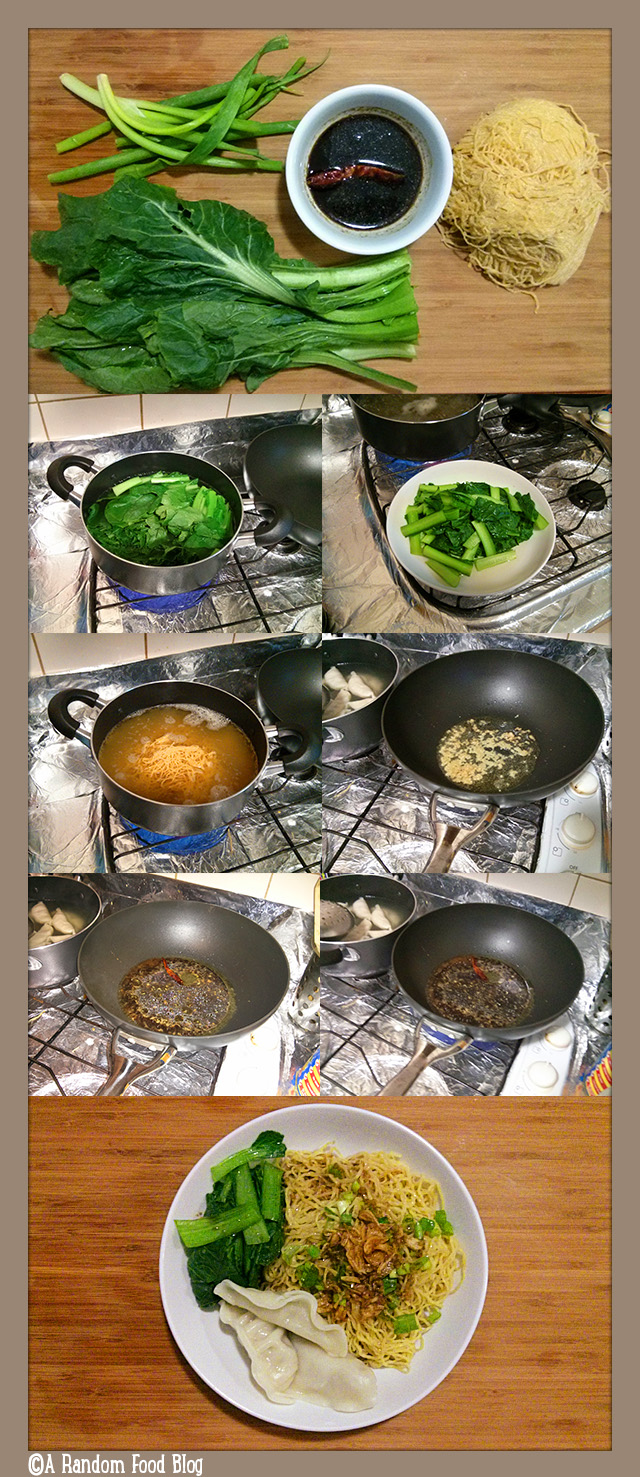


This is a dish that looks complex, but it is actually extremely easy. The name ‘dry noodle’ is quite deceptive—the dish itself is not dry, per se. Some people call it ‘dry tossed’ noodle because you cook the noodle, serve it dry and in the end you mix it with a sauce. You can do a lot of variation with the toppings, however this is my basic recipe for this dish. There are three components to this dish: the noodles, the sauce, and the toppings. If you tackle them one at a time systematically, you will see that it’s such an easy dish.
The most difficult thing is cooking the noodle, and it is all about technique. You don’t need any special skills for it, but those who have cooked this kind of noodle would tell you that if you don’t do it right, you’ll end up with a sticky, inedible lump. I wrote down my tips to foolproof this dish for home cooking. If you’re a novice in cooking this kind of noodle, I suggest reading the tips section below as I go into a lot of detail for you on how to cook the noodle.
Essential Components:
• Egg noodle (The best noodle for this recipe sometimes labelled as wonton soup noodle in Asian grocery- not chow mein noodle)
Additional Components:
• Asian green, I’m using choy sum in this recipe, cut into bite size
• Garlic, chopped
• Spring onion/scallion
Pantry item:
• Soy sauce
• Sugar
• White pepper
• Sesame oil
• Chinese rice wine
• Chili optional
Method:
• Blanch the choy sum for a few seconds in boiling water until they turn bright green, take them out, drain, and set aside
• Untangle and drop the noodle into boiling water until al dente – If you’re using the wonton noodle, it should only take a few seconds then take them out and set aside. See tip 2 and 3 below, this is probably the most important step
• Heat up a little oil in a pan and cook the garlic, then add the Chinese rice wine, soy sauce, sugar, white pepper (I’m also using dried chili)
• Cook the sauce until reduced a little, the taste should be sweet and salty
• Serve the noodle and vegetable, add a dash of sesame oil, add any toppings you like (scallion, wontons, fried shallots, BBQ pork slices, sesame seeds, etc) and pour a small amount of sauce on top
Tips and Thought:
• I never needed to plunge the vegetable into ice water afterwards but you can do it if you want
• Cook the noodle like you’d cook pasta—use a lot of water using the largest pot that you have. The noodle has a lot of starch and if you use small amount of water, you’ll end up with a big sticky mess. If you’re cooking a large amount, it’s better to do it in small batches. Make sure to untangle the noodle before you drop them into the boiling water, and then separate them just to make sure that they don’t stick to each other. Make sure the water is boiling, if you look at the photo below, it looks like the water isn’t boiling because I just dropped the noodle, but they literally went back to boiling in less than five seconds.
• After I cook the noodle, I then plunge them into cold water immediately to prevent overcooking, then I wash what’s left of the starch out using my hands before draining them—this prevents the noodle from sticking after cooking.
• Some people also cook the noodle and vegetables in stock to add more flavour, of course if you’re going to wash the noodle after, it’s sort of useless.
• Some people also serve this dish with additional bowl of stock with scallion
